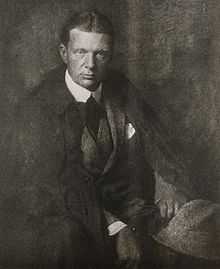Eric von Rosen

Count 'Carl Gustaf Bloomfield Eric von Rosen (born June 2, 1879 in Stockholm, died April 25, 1948 Skeppsholmen, Stockholm) was a Swedish Honorary doctor, patron, explorer, ethnographer and prominent figure in the Swedish upper class nazi-movement during the 30's[1][2]
Family
von Rosen was married to Baroness Mary Fock (1886–1967) with whom he had six children: Bjorn (b. 1905), Mary (b. 1906), Carl Gustaf von Rosen (b. 1909), Birgitta (b. 1913), Egil (b. 1919), and Anna (b. 1926). Eric von Rosen's father was Count Carl Gustaf von Rosen and his mother was Ella Carlton Moore of Philadelphia, Pennsylvania. He was brother to Count Clarence von Rosen.
Relationship to Hermann Göring
Von Rosen became brother-in-law to Hermann Göring when his wife's sister, Carin von Kantzow, married Göring. Everything had started when Göring was flying Eric von Rosen in bad weather from Stockholm to Rockelstad Castle, at the lake Båven in Sörmland, Sweden. Due to bad weather conditions, Göring had to stay at the castle. There he became acquainted with the sister of von Rosen's wife, Carin von Kantzow. She was at that time married to a Swedish officer, but would be his big love and future wife.
The von Rosen swastika
Eric von Rosen had been using a swastika as a personal owner's mark. He originally saw the symbol on runestones in Gotland, while at school. Knowing that the symbol signified good luck for the Vikings, he utilized the symbol and had it carved into all his luggage when going on an expedition to South America in 1901. Being a friend of Finland, he gave the newly independent state an aircraft, which signified the beginning of the Finnish Air Force. The aircraft, a license manufactured Morane-Saulnier MS Parasol/Thulin D, was marked with his badge, a blue swastika on a white background. The Finnish Air Force adopted this roundel as their national insignia.[3]
Göring had noted the swastika during his stay in Sweden and at von Rosens' castle (forged into a metal piece at the fireplace). However, the swastika of the German Nazi party had been adopted already in 1920, two years before Göring met Adolf Hitler.
References
- ↑ "Aftonbladet sport: Sportbladet avslöjar". .aftonbladet.se. Retrieved 2014-06-18.
- ↑ Karl N Alvar Nilsson, Svensk överklass och högerextremism under 1900-talet. Federativs förlag, 2000.
- ↑ "Rockelstad History". Rockelstad.se. Retrieved 2014-06-18.
External links
| Wikimedia Commons has media related to Eric von Rosen. |
|